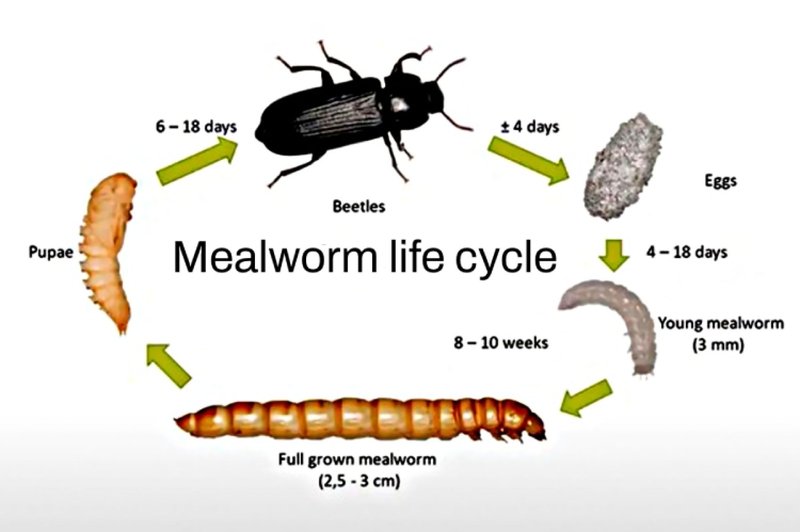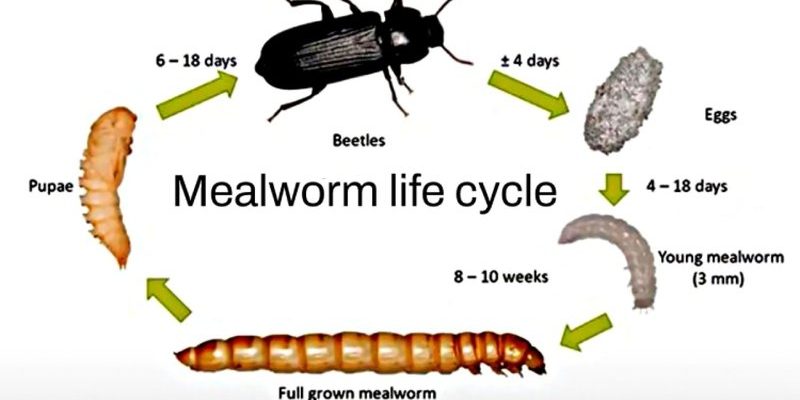
These unique worms play a vital role in the ocean’s ecosystem, turning the remains of dead creatures into life-giving energy for themselves and other organisms. If you’re curious about how these little marvels grow and live, you’re in for a treat. Let’s dive deep into their world and explore the fascinating stages of the bone-eating worm’s life cycle!
What Is The Bone-Eating Worm?
The bone-eating worm is a type of annelid known for its extraordinary diet. Living mostly on the ocean floor, these worms have an incredible ability to consume bones from marine animals that have met their end. Their scientific name, *Osedax*, translates to “bone-eater,” which perfectly captures their lifestyle. But what makes them so unique?
These worms have specialized bacteria in their gut that break down the tough mineral composition of bones. This symbiotic relationship allows them to extract necessary nutrients. Think of it like having a personal chef that can whip up a delicious meal from what appears to be a pile of leftovers!
Not only are these worms fascinating in their feeding habits, but they also play a crucial role in recycling nutrients in the deep sea. They help decompose dead animals, returning essential elements to the ecosystem. Without them, the ocean floor would be cluttered with bones, leaving a significant impact on the marine food chain.
Stage 1: Egg Development
The life cycle of the bone-eating worm begins in the form of tiny eggs. After a male and female mate, the female lays hundreds of eggs, often in the presence of decomposing bones. The eggs are encased in a gelatinous substance, which provides some protection and nutrition during their early stages.
Once laid, the eggs develop over a period of several weeks. They rely on ambient ocean temperatures and conditions to hatch. During this time, the larvae are completely dependent on their surroundings. If conditions aren’t right—like temperature or the availability of suitable bone remains—those little eggs might not survive.
This stage is crucial. It’s like trying to raise a delicate plant; the right environment can mean the difference between life and death. If the tiny larvae manage to survive the egg stage, they hatch and emerge ready for their next phase of life.
Stage 2: Larval Stage
After hatching, the bone-eating worm enters its larval stage. These larvae are free-swimming and can travel quite a distance, thanks to ocean currents. This mobility is vital because it allows them to search for the essential food source—bones.
During this stage, the larvae settle onto the ocean floor when they encounter a suitable decomposing bone. They have special adaptations that help them anchor securely to the bone surface. Think of it like finding a cozy spot in a crowded cafe; they need just the right place to settle in and make themselves at home.
Once attached, their bodies begin to undergo significant changes as they transition into their adult form. It’s a process called metamorphosis, where they develop the necessary structures to thrive as adult worms. This transition can take several weeks, and the worms’ ability to find and attach to bones is crucial for their survival.
Stage 3: Juvenile Stage
Once they’ve transformed into juveniles, the bone-eating worms start their feeding phase. They use a specialized set of teeth to carve into the bone, allowing them to access the nutrient-rich material inside. This is where their unique lifestyle really shines! It’s like having a gourmet restaurant right at their doorstep, and all they need to do is dig in.
Juveniles will often grow in colonies, sharing space on the same bone. By living together, they can maximize feeding efficiency. Imagine a group of friends sharing a large pizza; everyone is munching away and enjoying the feast together!
As they continue to consume the bone, they grow larger and develop a more complex anatomy. They start developing additional structures, like a fleshy mantle that helps them extend their reach into the crevices of bones. This stage is crucial for their growth and development as they prepare to become adults.
Stage 4: Adult Stage
When the bone-eating worm reaches adulthood, it develops a range of impressive adaptations. Adults can grow about 10 centimeters long, and they reproduce, ensuring the continuation of their fascinating life cycle. At this stage, they become more specialized in their feeding habits and morphology.
Adults are equipped with specialized structures that help them digest bones more effectively. Their unique bacteria work together with their tough digestive system, allowing them to break down bone matter efficiently. Think of it like having a toolbox filled with the right tools to get the job done swiftly and effectively!
Interestingly, adult bone-eating worms can often remain attached to bones for extended periods—sometimes even years. They continue to thrive on the nutrients present in the bones, making them an essential part of the deep-sea ecosystem. The longer they stay, the more they contribute to nutrient recycling in the ocean.
Behavior and Lifestyle of Bone-Eating Worms
So, how do bone-eating worms behave in their natural habitat? These fascinating creatures exhibit a few intriguing behaviors that help them survive and thrive in the deep sea. They often form colonies on large bones, creating bustling little communities.
These colonies help mature worms share resources, ensuring that everyone gets enough nourishment. You might wonder if there’s competition among them—there can be, but their efficient feeding strategy helps mitigate this. They’ll often eat the softer parts of the bones first, allowing them to work together to get the most out of their environment.
They also exhibit behaviors like territoriality. While they may live in close quarters, they’ll establish a kind of hierarchy, making sure that the strongest worms get prime feeding positions on the bones. It’s like a quirky little society where everyone knows their place!
The Impact of Bone-Eating Worms on the Ecosystem
The role bone-eating worms play in the ocean is nothing short of vital. By breaking down bones, they recycle nutrients that nourishes other marine life, such as fish and crustaceans. Without these worms, the ocean floor would be littered with remains that could potentially disrupt the entire ecosystem.
Their activity also supports the growth of various bacteria, which further enriches the seafloor environment. It’s like a well-oiled machine where every part plays a crucial role in keeping everything balanced.
Additionally, bone-eating worms help scientists understand more about deep-sea ecosystems and the life cycles of marine organisms. By studying these worms, researchers can gain insights into nutrient cycling, energy flow, and the adaptability of life in extreme environments.
The life cycle of the bone-eating worm is a remarkable journey from tiny eggs to mature, bone-devouring adults. Their unique adaptations and behaviors allow them to thrive in the deep ocean, breaking down bones and playing a significant role in the ecosystem.
Next time you think about the ocean, remember these quirky little worms and the complex relationships they maintain. They may be small, but they’re mighty in their contributions to the underwater world. Whether it’s recycling nutrients or forming unique communities, the bone-eating worm is a true marvel of nature!

